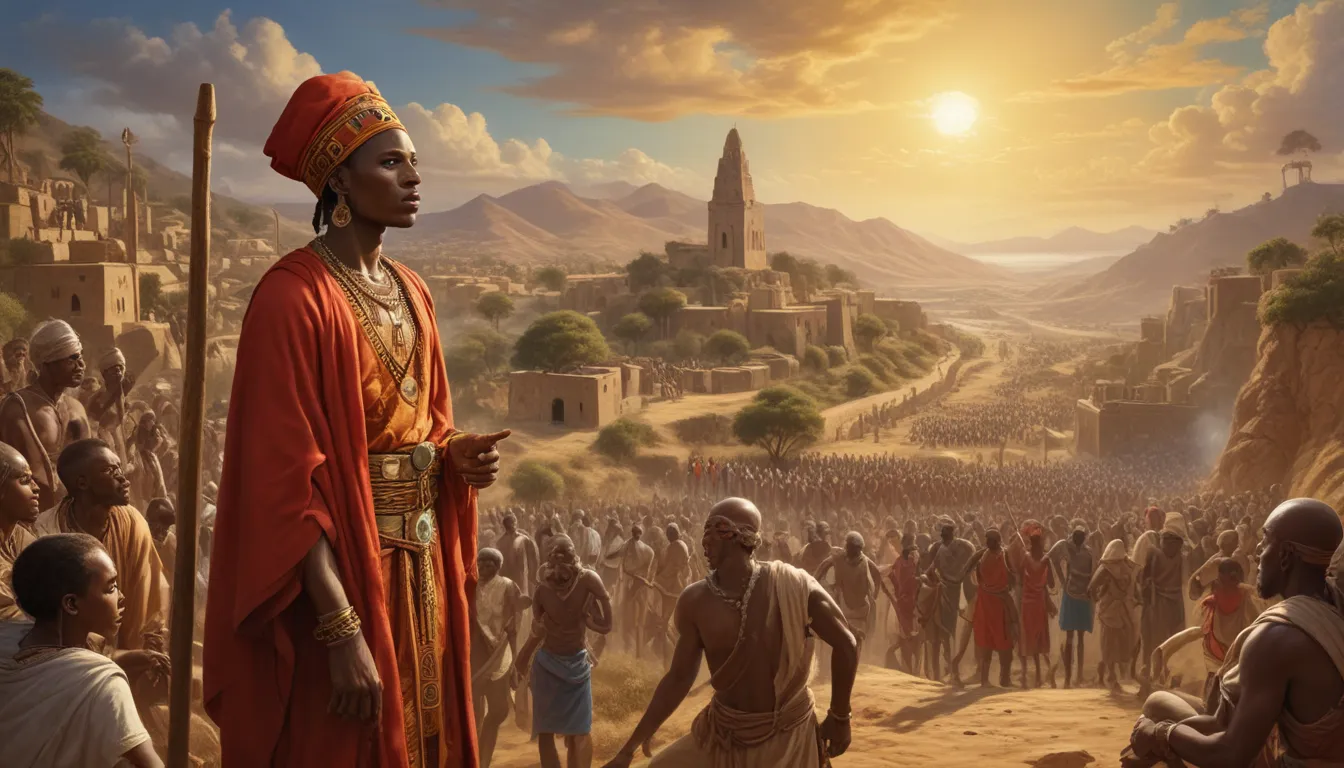The images in our articles may not match the content exactly. They are used to grab your attention, not to show the exact details in the text. The images complement the text but do not replace it.
Welcome to a journey through the life and achievements of Ezana of Axum, also known as Ezana the Great, a captivating figure in the history of the ancient Kingdom of Axum in present-day Ethiopia and Eritrea. From his conversion to Christianity to his military conquests and architectural marvels, Ezana’s legacy continues to fascinate historians and archeologists. Join us as we uncover 15 mind-blowing facts that showcase his remarkable contributions to the Axumite Empire.
Key Takeaways:
- Ezana of Axum was a powerful ruler who embraced Christianity, expanded his kingdom through conquests, and left behind a lasting legacy as a national hero in Ethiopia.
- His reign saw the flourishing of Christian art, the development of a unique script, and advancements in architecture and engineering, shaping the culture and prosperity of the Kingdom of Axum.
The Reign of Ezana:
Ezana, a powerful ruler known as Ezana the Great, reigned over Axum during the 4th century AD, leaving a significant impact on the growth and prosperity of the kingdom.
Embracing Christianity:
Ezana was the first ruler of Axum to embrace Christianity, establishing it as the state religion and making Axum one of the earliest Christian kingdoms in the world.
The Title of “King of Kings”:
By adopting the title “king of kings,” Ezana emphasized his power and authority over other rulers in the region, solidifying his position as a mighty monarch.
Military Conquests:
Ezana expanded the Kingdom of Axum through successful military campaigns, annexing territories like Kush, Saba, and Himyar, solidifying Axum’s dominance in the region.
Coinage and Currency:
Introducing a standardized currency system, Ezana minted coins depicting Christian symbols, providing insights into the culture and religious beliefs of his kingdom.
Architectural Marvels:
Known for ambitious building projects, Ezana oversaw the construction of impressive structures such as palaces, churches, and monumental stelae, showcasing the kingdom’s wealth and prowess.
Spread of Christianity:
Ezana actively supported the spread of Christianity, establishing churches and promoting religious education, influencing the religious landscape of the region.
Diplomatic Alliances:
Forming alliances with other Christian nations like Byzantium, Ezana fostered diplomatic relationships and established trade routes for cultural and economic exchanges.
Prosperity Under Ezana:
His reign marked a period of prosperity in Axum, with flourishing trade networks and increased agricultural productivity, bringing wealth and stability to the kingdom.
Advancements in Script and Language:
Credited with the development of the unique Ge’ez script, Ezana played a pivotal role in writing multiple languages in the region, including the ancient Ethiopian language.
Infrastructure Development:
Advancements in architecture and engineering under Ezana’s rule included the construction of dams, irrigation systems, and road networks, improving the lives of his subjects.
Influence on Art:
Ezana’s conversion to Christianity led to the flourishing of Christian art forms in the region, such as religious manuscripts and intricately carved stone crosses.
Naval Power:
In addition to a formidable army, Ezana built a powerful navy, asserting Axum’s influence over maritime trade routes and protecting coastal interests.
National Hero Status:
Revered as a national hero in Ethiopia, Ezana’s contributions to the development of Axum and the spread of Christianity have solidified his legacy in Ethiopian history and culture.
Commemorating Achievements:
To immortalize his accomplishments, Ezana erected the Ezana Stone, a monument detailing his reign and providing historical insights into the achievements of the Kingdom of Axum.
Conclusion:
In conclusion, Ezana of Axum was a fascinating figure whose reign and achievements have left a profound impact on the history of the Axumite Empire and Ethiopian civilization. His legacy continues to inspire and captivate scholars and enthusiasts alike, marking a significant chapter in Ethiopian history and culture.
FAQs:
-
Who was Ezana of Axum?
Ezana of Axum was a powerful ruler who reigned over the Axumite Empire in the 4th century AD, known for his conversion to Christianity and military conquests. -
What was Ezana’s greatest achievement?
Ezana’s conversion to Christianity was a significant achievement, shaping the culture, identity, and religious practices of the Ethiopian people. -
What impact did Ezana’s conversion to Christianity have?
Ezana’s conversion had a profound impact on Ethiopian civilization, influencing art, architecture, literature, and religious practices in the region. -
What is the significance of the Axumite stelae?
The Axumite stelae are impressive obelisks found in Axum, serving as markers for royal tombs and symbols of power and prestige. -
How did Ezana’s conquests shape the Axumite Empire?
Ezana’s conquests expanded Axum’s territorial boundaries, strengthening its influence and establishing the empire as a dominant force in the region.
Explore and Learn With Us:
Our commitment to delivering trustworthy and engaging content ensures that each fact shared is insightful and authentic. Join us on a journey through history as we uncover fascinating details about remarkable figures like Ezana of Axum, showcasing the enduring legacy of exceptional rulers in African history.






